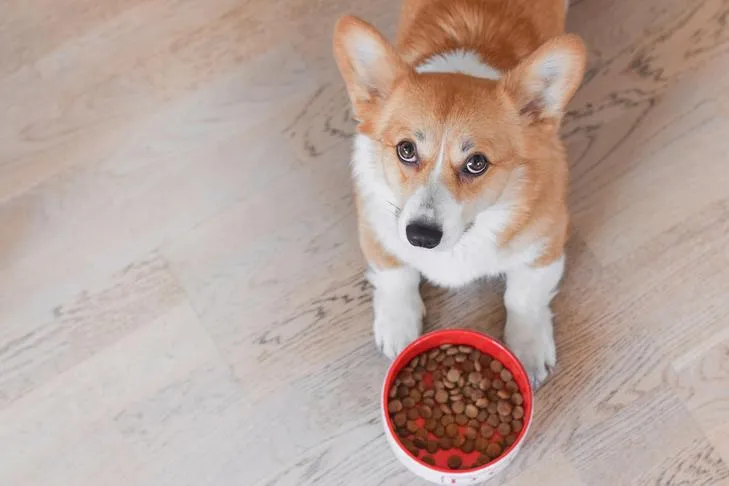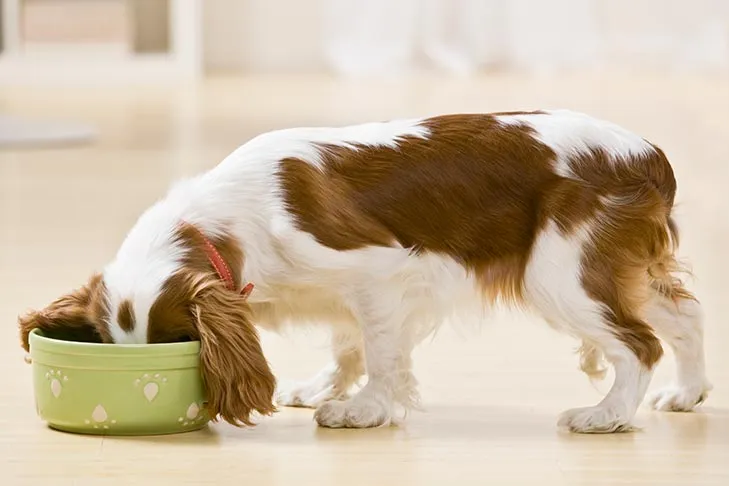Bringing a small breed puppy into your home is an exciting time, but their tiny stature belies a unique set of nutritional needs that are crucial for their healthy development. While your little companion might have a big personality, their delicate systems require a specially formulated diet to ensure they thrive. Navigating the myriad of puppy food options can be daunting, but understanding the specific requirements of small and toy breed puppies is the first step toward providing them with the healthiest start in life. This guide will delve into what makes a puppy food truly beneficial for small breeds, addressing their high energy demands, potential health risks, and how to choose the best nutrition.
Understanding the Unique Nutritional Needs of Small Breed Puppies
Small dogs, particularly during puppyhood, differ significantly from their larger counterparts when it comes to dietary requirements. Despite their diminutive size, small and toy breed puppies often possess a higher metabolic rate than large-breed puppies, meaning they burn calories much faster. This increased metabolic activity necessitates a diet that is calorie-dense and rich in essential nutrients to support their rapid growth and boundless energy.
Like all dogs, puppies require a balanced intake of proteins, fats, carbohydrates, vitamins, and minerals. Contrary to common misconceptions, domestic dogs are not exclusive carnivores; they benefit from a diverse diet that includes quality grains, fruits, and vegetables alongside premium meat sources. Commercial puppy foods found in pet stores are designed to provide these comprehensive nutrients, simplifying the process for owners who may not be experts in canine nutrition. These convenient options ensure your small breed puppy receives everything they need for optimal health and development.
The Critical Risk: Hypoglycemia in Small Breed Puppies
One of the most significant nutritional concerns for small breed puppies, especially toy breeds, is the risk of hypoglycemia, or dangerously low blood sugar. Their high metabolic rates, coupled with low body fat and sugar reserves, make them particularly susceptible to this condition. Hypoglycemia can quickly become life-threatening if not addressed promptly.
To prevent hypoglycemia, small breed puppies require frequent feedings of a calorie-dense, small breed-specific puppy food. This might mean feeding them anywhere from four to six times a day, depending on their age and individual needs. Owners must closely monitor their puppies for symptoms such as weakness, lethargy, muscle tremors, and seizures. If you observe any of these signs, it is crucial to contact your veterinarian immediately. Early intervention is key to managing and resolving hypoglycemia.
 Pembroke Welsh Corgi resting near its bowl of puppy kibble, emphasizing small breed nutrition.
Pembroke Welsh Corgi resting near its bowl of puppy kibble, emphasizing small breed nutrition.
What Makes a Puppy Food “Healthy” for Small Breeds?
Choosing the healthiest puppy food for your small breed involves understanding its key components and how they cater to unique physiological needs. A truly healthy formula goes beyond basic sustenance to support robust growth, strong immunity, and sustained energy.
Key Nutritional Components for Healthy Puppy Development:
- High-Quality Protein: Essential for muscle development, tissue repair, and providing sustained energy. Look for identifiable animal protein sources like chicken, lamb, turkey, or fish as the first ingredients. These proteins offer a complete amino acid profile vital for growing puppies.
- Essential Fats: A concentrated source of energy, fats are crucial for healthy skin and a shiny coat. Omega-3 fatty acids, particularly DHA (docosahexaenoic acid), are vital for brain and vision development in puppies. Sources include fish oil, flaxseed, and chicken fat.
- Complex Carbohydrates: Provide a steady release of energy to fuel your puppy’s active metabolism. Good sources include sweet potatoes, brown rice, barley, and peas, which also offer dietary fiber for healthy digestion.
- Vitamins & Minerals: A balanced blend supports a strong immune system, healthy bone growth, and overall bodily functions. Key minerals like calcium and phosphorus are critical for skeletal development, while vitamins C and E act as antioxidants.
- Antioxidants: Found in ingredients like fruits and vegetables, antioxidants help protect cells from damage, bolstering the immune system and promoting long-term health.
Specific Considerations for Small Breeds:
- Kibble Size and Shape: Small breed puppies have tiny mouths and delicate teeth. Their food should feature appropriately sized, smaller kibbles that are easy to chew, swallow, and reduce the risk of choking. This also encourages proper digestion.
- Calorie Density: Due to their high metabolic rate, small breed puppies need more calories per pound of body weight than larger breeds. A calorie-dense formula ensures they get sufficient energy without needing to consume large volumes of food, which can be difficult for their small stomachs.
- Digestibility: Ingredients that are easily digestible help small breed puppies absorb nutrients efficiently and minimize digestive upset. High-quality protein sources and moderate fiber content contribute to better digestion.
Choosing the Right “Healthy” Puppy Food: What to Look For
Finding the optimal food requires careful attention to labels, manufacturer practices, and professional guidance. You shouldn’t assume that small breed puppies are low maintenance to feed; improper nutrition can have serious consequences.
Deciphering the Dog Food Label:
One of the first steps is examining the food label. Look for these crucial elements:
- “Complete and Balanced” Statement: This assures that the food meets the minimum nutritional requirements established by the Association of American Feed Control Officials (AAFCO) for a specific life stage.
- Life Stages: Ensure the label explicitly states “for growth” or “for all life stages,” indicating it is suitable for puppies.
- Allergen Check: Review the ingredients for any known allergens your puppy might have. Common allergens include certain proteins (e.g., beef, dairy) or grains (e.g., wheat).
Examining the Ingredients:
The ingredient list provides insight into the primary components. Prioritize formulas where the first few ingredients are whole, identifiable protein sources (e.g., “chicken meal” rather than “meat meal”) followed by healthy carbohydrates and fats. While the list shows what is in the food, it doesn’t always reflect the quality. For deeper insight, contact the manufacturer:
- Ask for a complete nutritional analysis to share with your vet.
- Inquire if a board-certified veterinary nutritionist is on their staff.
- Confirm if they conduct AAFCO feeding trials for their products.
- Ask about their manufacturing process (in-house vs. outsourced) and ingredient sourcing.
- Verify the calorie count per serving to help prevent overfeeding.
The Importance of Veterinarian Recommendations:
Your veterinarian is your most trusted resource. Based on your puppy’s breed, age, individual health status, and any existing concerns, they can recommend specific foods or brands that are best suited to provide optimal nutrition and address particular risks like hypoglycemia. They can also help you understand how to prevent this condition and advise on immediate steps if you suspect your puppy is affected.
 Rat Terrier puppy resting in bed, chewing on a rawhide treat, illustrating a contented small breed puppy.
Rat Terrier puppy resting in bed, chewing on a rawhide treat, illustrating a contented small breed puppy.
Types of Healthy Puppy Food for Small Breeds
The market offers various forms of puppy food, each with its own benefits.
Dry Puppy Food (Kibble)
Dry kibble is the most common choice due to its convenience, ease of storage, and often lower cost. For small breed puppies, dry food with small kibbles helps with chewing and can also contribute to dental health by reducing plaque and tartar buildup. Its portability makes it ideal for travel and can even be used as training treats.
Wet Puppy Food (Canned)
Wet food, with its high moisture content, is excellent for ensuring adequate hydration, especially for puppies who don’t drink enough water. Its soft texture makes it easy to chew, making it a good option for puppies with developing teeth or dental sensitivities. Wet food is often highly palatable, which can be beneficial for picky eaters. While it might be lower in calories by volume due to water content, quality wet foods are still nutrient-dense.
Specialty Diets for Small Breed Puppies
Various dietary trends exist, including raw diets, grain-free diets, and home-cooked meals. While these options may appeal to some owners, they come with significant concerns, especially for growing puppies.
- Raw Diets: The FDA and many veterinary organizations advise against raw feeding due to risks of bacterial contamination (e.g., Salmonella, E. coli) that can harm both the pet and human family members. Raw diets are also often nutritionally unbalanced, which can be detrimental to a developing puppy.
- Grain-Free Diets: Unless a puppy has a confirmed grain allergy, there is little scientific evidence to suggest grain-free diets are inherently healthier. Some studies have even linked certain grain-free diets to dilated cardiomyopathy (DCM) in dogs, though the exact cause is still under investigation.
- Home-Cooked Meals: Preparing a nutritionally complete and balanced home-cooked diet for a puppy is incredibly challenging and often requires the guidance of a board-certified veterinary nutritionist. Without expert formulation, these diets can easily lead to nutrient deficiencies or excesses.
If you are considering any non-traditional diet, it is paramount to consult your veterinarian or a veterinary nutritionist to ensure it meets all your puppy’s nutritional needs and minimizes health risks. For puppies with diagnosed food allergies or sensitivities, your vet can recommend specific hypoallergenic or limited-ingredient diets, identifying ingredients to avoid for your small breed puppy.
 Cavalier King Charles Spaniel eagerly eating from its food bowl, highlighting appetite and enjoyment.
Cavalier King Charles Spaniel eagerly eating from its food bowl, highlighting appetite and enjoyment.
Feeding Guidelines: How Much and How Often?
Determining the right amount and frequency of feeding is just as crucial as choosing the Healthiest Puppy Food For Small Breeds. While small breed puppies need more calories per pound, owners must avoid overfeeding.
Always start by following the feeding guidelines on the back of the puppy food bag. These instructions are typically based on age and anticipated adult weight. Measure out each meal precisely using a measuring cup or scale, rather than eyeballing it. Closely monitor your puppy’s weight and body condition. If they are gaining too much weight too quickly or appear underweight, adjust the portions accordingly. Your veterinarian can help you determine your puppy’s ideal weight and body condition score.
For small breed puppies, frequent, smaller meals are essential to maintain stable blood sugar levels and prevent hypoglycemia. This usually means feeding 4-6 times a day for very young puppies, gradually reducing to 3 meals a day as they mature. Consistency in feeding times also helps establish a routine and aids digestion. Early management of portion sizes is vital to prevent obesity, a major health concern with lifelong implications for dogs.
Beyond Puppyhood: Evolving Nutritional Needs
While our focus is on the healthiest puppy food for small breeds, it’s worth briefly touching on their evolving needs. Small breed dogs often live longer than large breeds, meaning their diet can remain consistent for many years after they transition from puppy food.
- Transition to Adult Food: Your vet will advise you on the appropriate time to transition your small breed puppy to an adult formula, typically between 9-12 months of age. Adult foods are formulated to maintain health rather than support rapid growth.
- Senior Needs: Small breed senior dogs may benefit from diets rich in antioxidants to support their longevity. While AAFCO doesn’t recognize a specific senior nutrient profile, many “senior” formulas aim to support joint health, cognitive function, and manage weight. Always discuss senior diets or prescription diets for age-related health issues (like kidney disease or osteoarthritis) with your veterinarian. These prescription diets are clinically formulated and proven to help manage specific conditions.
 Cavalier King Charles Spaniel and Yorkshire Terrier meeting, showing two happy, well-fed small dogs.
Cavalier King Charles Spaniel and Yorkshire Terrier meeting, showing two happy, well-fed small dogs.
Conclusion
Providing the healthiest puppy food for small breeds is a foundational step toward ensuring your cherished companion lives a long, vibrant life. Their unique metabolic rates and susceptibility to conditions like hypoglycemia demand a carefully chosen diet that is calorie-dense, nutrient-rich, and features appropriately sized kibble. By meticulously reading labels, understanding key ingredients, and maintaining open communication with your veterinarian, you can navigate the many options available. Partnering with your vet will empower you to make informed decisions that support your small breed puppy’s rapid growth, robust health, and overall well-being. Invest in their nutrition now, and reap the rewards of a happy, healthy dog for years to come.
